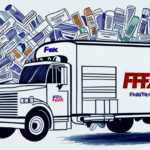Navigating Wine Shipping Laws in the United States
Shipping wine within the United States involves navigating a complex and varied set of laws that differ significantly from state to state. Whether you're a winery, a retailer, or a consumer looking to ship or receive wine, understanding these regulations is essential to ensure legal compliance and avoid potential penalties.
A State-by-State Guide to Wine Shipping Regulations
As of 2024, 44 states in the US permit some form of wine shipping directly to consumers. However, the specific rules and requirements can vary widely. For example, California and New York allow direct-to-consumer (DTC) shipments under certain conditions, while Texas requires shipments to go through licensed distributors. Additionally, some states differentiate between shipping to consumers versus retailers, each with its own set of regulations.
Non-compliance with these regulations can result in fines, shipment delays, or legal actions. It is crucial to consult each state's alcohol control board or relevant regulatory authority before shipping wine to ensure adherence to all local laws and avoid shipping delays and other logistical challenges.
International Wine Shipping Considerations
Shipping wine internationally introduces additional complexities, as each target country has its own import regulations, duties, taxes, and restrictions on alcohol types and quantities. For instance, the European Union has stringent labeling and tax requirements for alcohol imports, while countries like Canada and Australia have specific permits and duties that must be paid. Partnering with an experienced international shipping company can help navigate these regulations effectively to ensure legal and timely delivery.
The Ins and Outs of Shipping Wine
After gaining a clear understanding of the legal landscape, the next step is to plan the actual shipment. This involves selecting the right carrier, ensuring proper packaging, and implementing best practices to maintain wine quality during transit.
Tips for Safely and Legally Shipping Wine
Selecting a reputable carrier experienced in alcohol shipping is paramount. The carrier should understand relevant laws, possess the necessary permits, and provide documentation demonstrating their legal authority to transport alcohol. Additionally, ensuring that all shipments are correctly labeled and that packaging meets industry standards is essential to prevent damage and comply with regulations.
Understanding the Different Types of Wine Shipping Licenses
Depending on the states involved, different licenses may be required for shipping wine. Common licenses include:
- Direct-to-Consumer (DTC) Permit: Allows wineries to ship directly to consumers.
- Wine Retailer's License: Permits retailers to sell and ship wine to consumers.
- Wine Wholesaler's License: Enables wholesalers to distribute wine to retailers or other businesses.
Obtaining the appropriate licenses is essential to operate legally and avoid potential legal issues. More information can be found on the Alcohol and Tobacco Tax and Trade Bureau (TTB) website.
How to Ensure Your Wine Shipment is Compliant with State Laws
Compliance involves not only understanding shipping laws but also adhering to state-specific labeling requirements and tax regulations. Consulting with legal counsel specializing in alcohol laws can provide valuable guidance to ensure all aspects of your shipment are compliant with state laws.
Choosing the Right Carrier for Your Wine Shipments
The right carrier should have experience in handling alcohol shipments and offer services that align with your shipping needs. Factors to consider include the carrier's licensing, ability to provide the necessary permits and documentation, secure storage and shipping facilities, and robust tracking systems to monitor your shipment's progress.
Packaging Wine for Safe and Secure Shipping
Proper packaging is critical to prevent damage during transit. Utilize specialized wine shipping boxes, protective materials like bubble wrap or foam inserts, and secure sealing methods. High-quality packaging not only safeguards the wine but also enhances the customer experience upon delivery.
Tracking Your Wine Shipments: Best Practices
Implementing effective tracking systems allows you to monitor the status and location of your wine shipments in real-time. Utilizing tracking tools provided by the carrier or third-party providers ensures transparency and enables prompt responses to any issues that may arise during transit, such as delays or route deviations.
Keeping Your Customers in the Loop: Communication Strategies
Maintaining clear communication with your customers throughout the shipping process builds trust and enhances the overall customer experience. Provide regular updates on the shipment’s status, including tracking information and estimated delivery times. Clear instructions on how to receive and sign for the shipment can also help ensure a smooth delivery process.
Receiving Wine Shipments: What You Need to Know
Upon receiving a wine shipment, verify that the delivery address is correct and that someone over the age of 21 is available to sign for the package. Inspect the shipment for any signs of damage or leakage before signing the delivery form. If any issues are detected, contact the carrier immediately to report the problem and initiate a claim.
Saving Money on Wine Shipping: Tips for Auditing Invoices
Shipping wine can be costly, so it's essential to identify opportunities to save money where possible. Regularly auditing shipping invoices can help identify errors or overcharges that can be challenged to reduce costs. Additionally, consolidating shipments or optimizing shipping frequency can lead to significant savings over time.
Ensuring Proper Temperature Control During Wine Shipping
Wine quality can be compromised by temperature fluctuations during shipping. Working with carriers that offer temperature-controlled shipping solutions is essential. Utilizing specialized packaging materials that provide insulation can also help maintain the optimal temperature range of 50°F to 59°F, preserving the wine's flavor and aroma.
Final Thoughts on Shipping Wine in the US
Shipping wine within the United States requires careful planning, legal compliance, and attention to detail. By understanding the relevant laws, preparing properly for shipments, and selecting the right carrier, you can navigate the challenges of wine shipping effectively. Investing in proper packaging, tracking systems, and communication strategies ensures that your wine arrives safely and in excellent condition.
It's important to stay informed about state-specific restrictions and legislative changes that may impact wine shipping. Additionally, considering the purchase of shipping insurance can provide protection against potential damage or loss during transit. With diligence and informed practices, shipping wine can be a smooth and efficient process for both businesses and consumers alike.






















